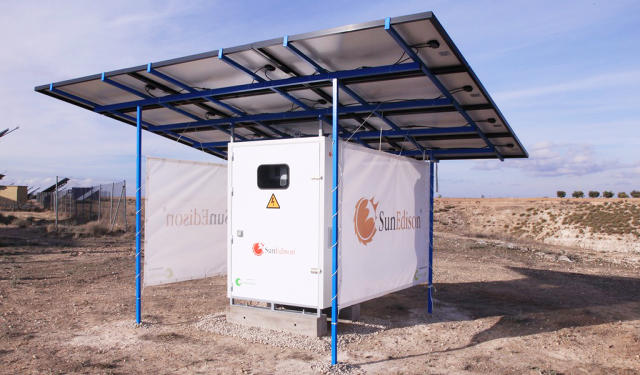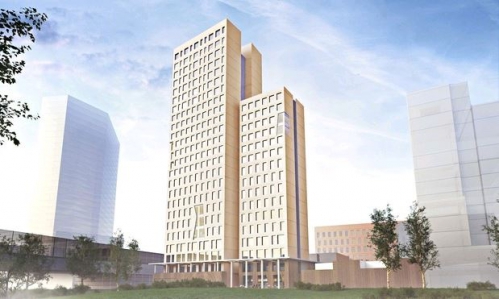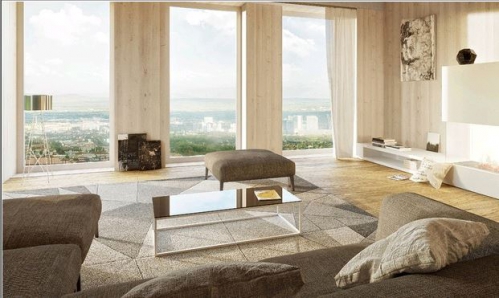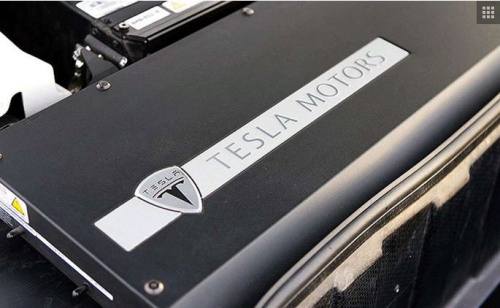Technique
Dantherm prend la tête!
Nouvelle VMC, faible débit et haut rendement (FAAST)
 |
Grâce à un rendement de 93%, la VMC double flux HCC 2 de Dantherm détient désormais la position de leader dans le listing de la Maison Passive en Allemagne: La VMC double flux avec le meilleur rendement dans la plage d’utilisation de 70-140 m3/h.
La VMC double flux HCC 2 est conçue pour montage dans un faux plafond ou sur le mur. La VMC double flux HCC 2 est idéale pour les appartements et les villas jusqu’à 150 m2.
27 Mai 2015
http://news.archiexpo.fr/press/dantherm-air-handling/dantherm-prend-tete-80586-200719.html
Nouveaux produits Bâtiment : Multipor : le panneau isolant 100 % minéral certifié ACERMI
"Nouveau" type d'isolant. Panneau rigide minéral sans fibre, sans CoV, résistant au feu (ce n'est pas le cas pour l'EPS ou l'XPS). Le Lambda n'est pas exceptionnel (0,045) mais une bonne résistance à la compression (0,35 N/mm2 contre 0,3 pour du XPS haute densité posé au sol). Il s'agit en fait de "béton cellulaire hyper allégé", du coup il pourrait être simplement peint ? (FAAST).
Le blog du Bâtiment : Multipor est un panneau isolant 100 % minéral, rigide sans fibres et sans CoV, résistant au feu, permettant la réalisation d’une isolation par l’extérieur ou l’intérieur en neuf comme en rénovation. Fabriquée à partir de matières premières naturelles identiques à celles utilisées pour le béton cellulaire (sable, chaux, ciment et eau), la solution Multipor a obtenu la certification ACERMI en octobre 2014.
A Compact Solar And Power Storage System Gets Off-Grid Communities Their Own Minigrid
Une rélflexion sur le "off-grid technologies". Plutôt que de développer le réseau électrique jusqu'à ceux qui n'en n'ont pas, l'idée est de placer ces stations aux endroits stratégiques. Efficace surtout où il y a beaucoup de soleil ... pas très esthétique ... mais bonne idée. (FAAST).
Power to dozens of households, no annoying electric company.
More than a billion people don't have electricity, and a billion more live with unreliable electricity. Getting power to these people is key to economic development, but it's a big challenge: Building out traditional electric grids to dispersed rural communities is expensive, and probably not cost-effective.
As a result, there's growing interest in off-grid technologies like home solar panels and minigrids where renewable generation is balanced with more traditional supply at a local level. "People in charge of electrification are changing their mindset as they see the solutions available to them," says Tomás García, general manager for rural electrification at SunEdison, a U.S. energy company focused on the developing world. "You can see a parallel with the mobile phone system in Africa, where people will never have a landline. With power, it's the same: There will be many people who live off-grid from the start."
SunEdison's latest piece of equipment to achieve that is the Outdoor Microstation, an all-in-one solar and battery storage device for small communities. It comes in two versions. The larger unit has 12 solar panels and provides enough power for 25 households for five hours each night (including street lighting). It stores enough power for three nights of "autonomy"—meaning those days when the sun doesn't shine enough to restore the supply.
"It allows us to bring clean, reliable, and affordable electricity to rural areas," García says.

The upper-end Microstation costs about $27,000, but comes with battery life of 10-plus years. It's the sort of nuts-and-bolts technology that makes renewable energy more reliable. By storing power when the sun is plentiful and saving it for a gloomy day, rural communities can hope to ride out most intermittency issues.
SunEdison's larger goal is to bring power to 20 million people by 2020, and in the process become a fully fledged "rural utility." Based on forecasts from the International Energy Agency, García says 80% of those without electricity will support decentralized energy—i.e., not big-grid electricity—because its costs are falling all the time.
[Top Photo: llaszlo via Shutterstock]
April 2, 2015
Facit Homes' D-Process creates buildings that snap together like LEGO bricks
Exemple de préfabrication poussée à son maximum ... des éléments qui s'emboîtent comme des briques de LEGO... (FAAST)

Using D-Process, Facit Homes designs each building on a computer in extremely detailed pieces which are then cut on a CNC router. The building components are shaped into LEGO-like cassettes and are usually made from plywood, which is light enough to be easily assembled on-site. Thanks to the high precision of the process, costs and material waste are kept to a minimum.
Each home includes a thermal envelope that makes sure the house is air tight, conserving energy and minimizing heat loss. Depending on the site requirements, an array of supplementary environmental systems such as solar thermal systems and photovoltaic panels can be plugged into the building to make it perform more efficiently.
Houses like Villa Asserbo in Denmark and the Hertfordshire House in the UK are just a few successful examples of homes built using the on-site D-Process. In the case of the 200-square-meter Hertfordshire House, the home’s heating system has the equivalent output of a single 4kW radiator, while the layout of the Villa Asserbo, built from 800 sheets of sustainable plywood, takes advantage of natural light and surrounding views.
Vienna set to build the world's tallest wooden skyscraper
Le plus haut bâtiment construit en bois (24 étages) à Vienne avec plus de 75% de la structure réalisée dans cette matière... à garder dans un coin de tête ? (FAAST)
Architecture firm Rüdiger Lainer and Partner has unveiled plans to build the world’s tallest wooden skyscraper in the Seestadt Aspern area of Vienna. The 276ft, 24 story HoHo tower will house a hotel, apartments, a restaurant, a wellness center and offices. 76 percent of the structure will be constructed from wood, which will save a phenomenal 2,800 tonnes of CO2 emissions over similar structures built out of steel and concrete.
Speaking to the Guardian, project developer Caroline Palfy, of Kerbler explained “I think it is important everyone now… thinks in different ways. We have wood, which is a perfect construction material for building. It was used 200 years ago and it was perfect then and is perfect now.”
Related: North America’s tallest wood building opens in British Columbia
Not only is the material appropriate for construction of such a building, it is radically more environmentally friendly than concrete. According to research from Columbia University, the manufacturing of cement—a key ingredient in concrete—accounts for a whopping five percent of all global CO2 emissions. Trees, on the other hand, absorb CO2 as they grow—so, if wood is sustainably sourced it can serve as an eco-friendly alternative building material.
And so the HoHo tower could, on its own, save 2,800 tonnes of C02 emissions, equivalent, the architects say, to driving a car 25 miles a day for 1,300 years. Impressive stuff (assuming it’s not a Tesla). There is, however, one substantial downside to wood over concrete: it’s not quite so fire-proof. The Vienna Fire Department has voiced their concerns, and is now working with Rüdiger Lainer and Partner to ensure the safety of their plans, which includes measures such as “a more fail-safe sprinkler system.”
by Charley Cameron, 03/03/15
http://inhabitat.com/vienna-set-to-build-the-worlds-tallest-wooden-skyscraper/
Will Tesla's Home Batteries Revolutionize Consumer Solar Power?
Explication et annonce de TESLA de créer une batterie pour habitation, coming soon...
Living off the grid — independent of the municipal water supply, sewer, natural gas or electrical power grid — has long been a dream of survivalists and environmentalists. The autonomy of a self-sustaining house is attractive to them because it not only saves energy, but it also lessens dependence on the government. In the case of disaster, it could be-life saving.
Architecture has had somewhat of an obsession with the idea, from Earth Houses to net-zero buildings. But these off-the-grid projects are typically just one or two homes far out in the boonies, a vacation cabin or small dwelling for a family. Some small communities have popped up, but they are rare. These eco-pioneers would like for us all to be self-sufficient, and at their most radical, their ideology is a flat rejection of consumerism and a capitalist society.
Elon Musk wants to take this concept to the big time. The owner of leading electric car company Tesla Motors has announced plans to manufacture consumer lithium-ion batteries for home use as a backup and energy storage device, which could make living off the grid much easier in combination with self-sustained energy sources. This could upend the home energy market, taking the power away from utility monopolies that have dominated the production and distribution of energy for decades.
Image via www.offgridworld.com
“We’re going to unveil the Tesla consumer home battery for use in people’s houses or businesses, fairly soon. We have the design done and it should start going into production probably in about six months or so. We probably have a date to have a, sort of, product unveiling, it’s probably in the next month or two. It’s really great. I’m really excited about it,” said Musk. At Tesla's $5 billion facility outside Reno, Nev., they will make the stationary battery packs as well as the equipment to connect them to rooftop solar panels. Musk plans to package the panels and batteries and sell them to homeowners and businesses across California.
Matt Shaw Feb. 26. 2015







